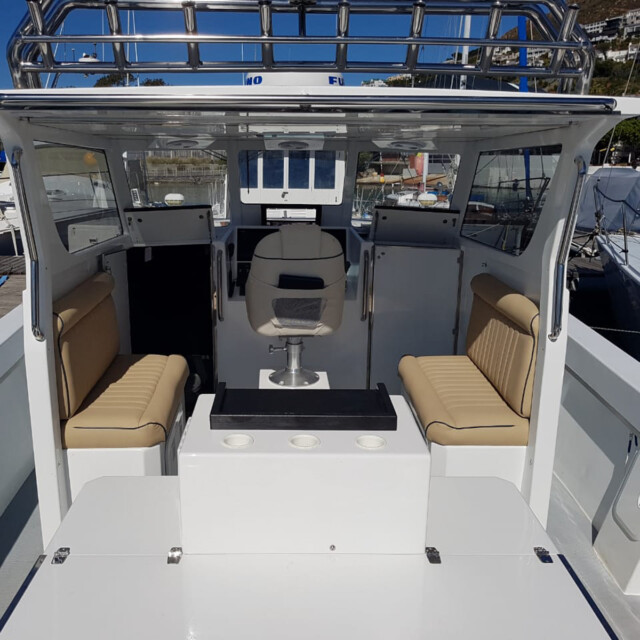South Africa Birding & Wildlife Safari
Highlights
Highlights
- Exceptional, high quality birding and wildlife viewing in a range of habitats.
- Visit the fabulous Kruger National Park and Mkhuze Game Reserve with world-class birding alongside iconic wildlife including good chance of the Big Five.
- Expect a large bird list with many special and endemic species
- Spectacular African wildlife including lions, cheetahs, leopards, elephants, rhinos, crocodiles, hippos, giraffes, antelope, and more.
Map
Map
Overview
Tour Overview
South Africa is a land of astounding diversity—not only in culture but in its extraordinary natural heritage. South Africa is a true haven for bird enthusiasts, as the country hosts around 840 bird species and boasts an impressive 69 endemic and near-endemic bird species. Its array of distinctly different ecosystems allows birders to explore an exceptional variety of bird-rich habitats, from highland grasslands and sub-tropical wetlands to savannas and fynbos-covered mountains. It’s also the exclusive stronghold for two remarkable bird families, the Rockjumpers and the Sugarbirds, found only here and in the tiny neighbouring nations of Lesotho and eSwatini.
Our birding tour will begin in Johannesburg and venture to the high-altitude grasslands of Dullstroom, home to localized species like the Yellow-breasted Pipit (Endemic) and Gurney’s Sugarbird (Near Endemic). In the nearby Blyde River Canyon, dramatic cliffs and escarpment forests provide habitat for raptors such as Cape Vulture, as well as a host of forest species.
Next, the iconic Kruger National Park, where birders can enjoy a mix of savanna and riverine species—rollers, storks, hornbills, eagles—and the bonus of world-renowned mammal viewing, including the Big Five (lions, leopards, rhinos, elephants, and buffalos).
In the grasslands and wetlands of Wakkerstroom, endemics like Yellow-breasted Pipit (Endemic) are key targets. From here, the route follows the sub-tropical coastline to iSimangaliso Wetland Park and St Lucia, where forest, estuary, and wetland habitats support species such as Green Malkoha, and Livingstone’s Turaco. Eshowe adds further forest specials, including the Spotted Ground Thrush, Lemon Dove, and Eastern Bronze-naped Pigeon. The cool, misty forests and rolling grasslands of Karkloof in the KwaZulu-Natal Midlands offer sightings of threatened species like Wattled and Grey-crowned Crane.
Finally, the tour heads to the Western Cape, a truly remarkable region defined by rugged mountain ranges, strong summer winds, and a winter rainfall regime that has shaped the Cape Floral Kingdom—home to the unique vegetation known as Fynbos. This singular habitat hosts a wealth of range-restricted and endemic birds like, Orange-breasted Sunbird and Cape Sugarbird making the Western Cape a must-visit for endemics-seekers. The region also delivers unforgettable scenery, a rich cultural tapestry, friendly locals, and excellent travel infrastructure. The tour culminates with a pelagic trip from Cape Town, where birders venture into the cold, nutrient-rich waters of the Atlantic in search of albatrosses, petrels, and shearwaters—an exhilarating finale to our South African birding tour.
Dates & Prices
DATES & PRICES
What's Included
What's Included
Tour Price Includes
- All meals
- All accommodations
- Ground transportation
- 1 local guide with 4 - 5 participants, 2 guides (local & EET) with 6 - 10 participants
- All park, conservation and entrance fees
- 4x4 Guided Birding Day Tour up Sani Pass
- Pelagic boat tour from Cape Town
Tour Price Does Not Include
- Flights to and from start / end location
- Travel and medical Insurance
- Items of a personal nature
- Alcoholic drinks
- Visas (please obtain multiple entry visas for South Africa)
Gallery
Gallery




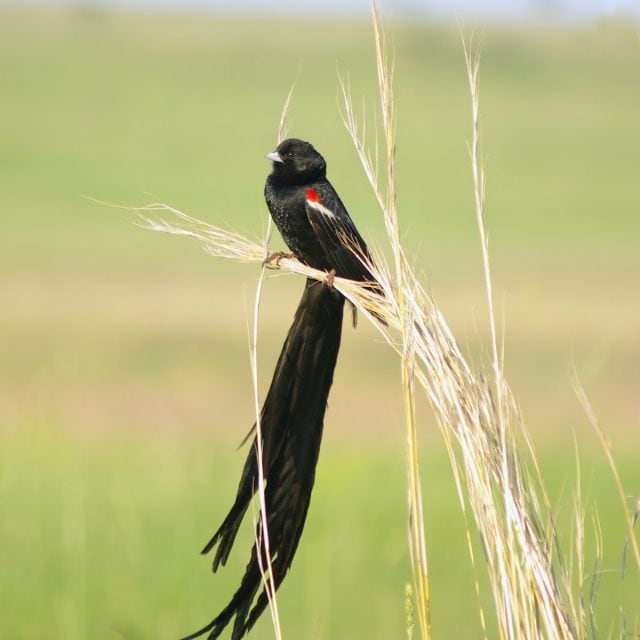

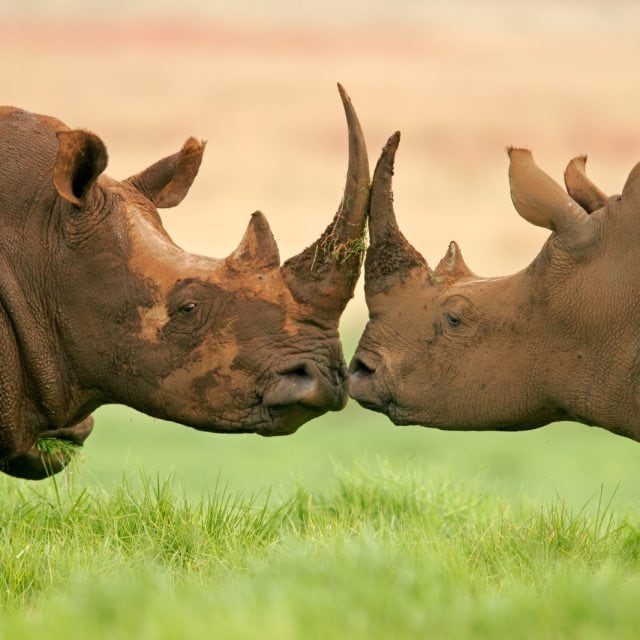
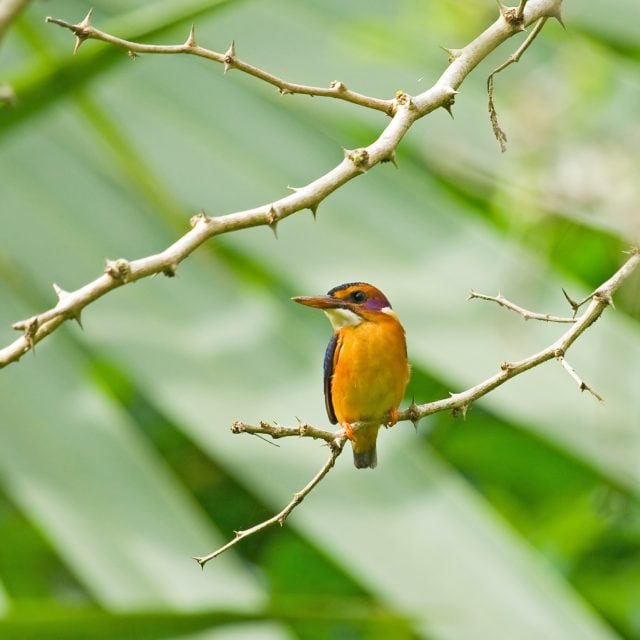











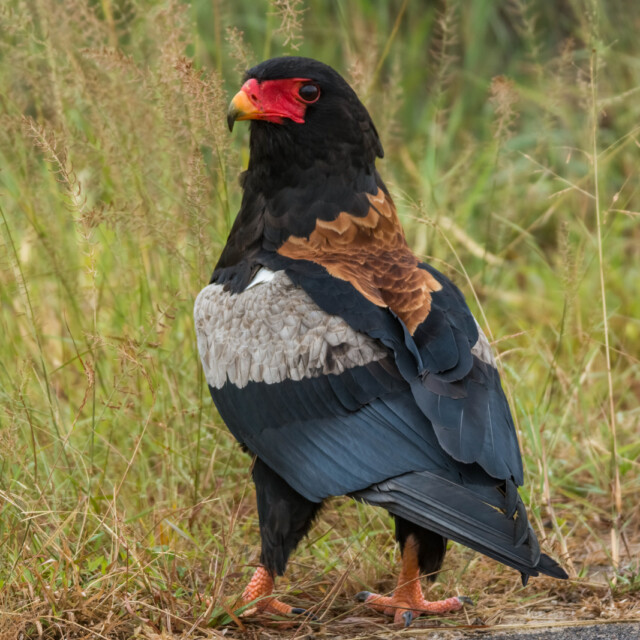
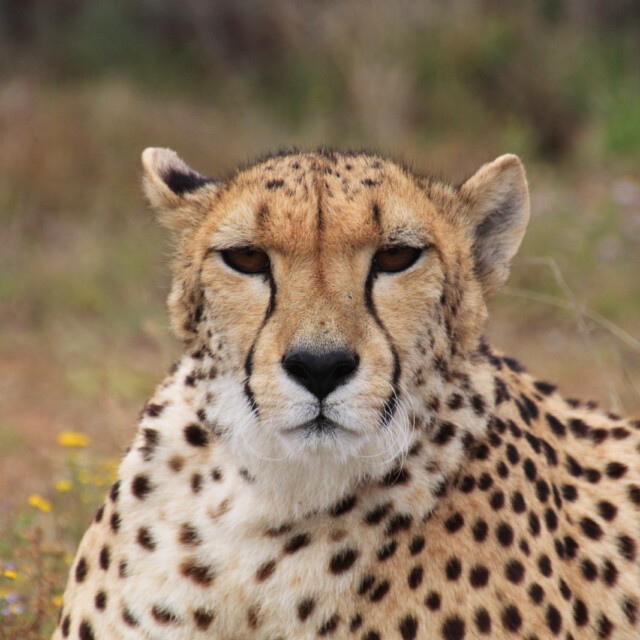
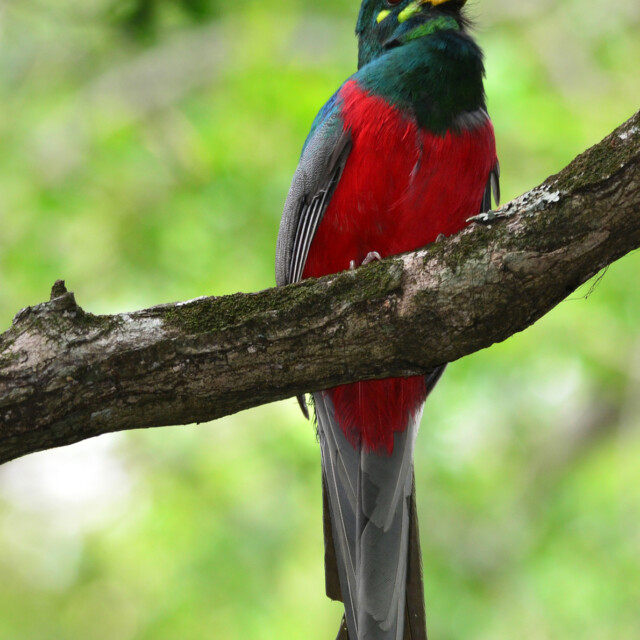
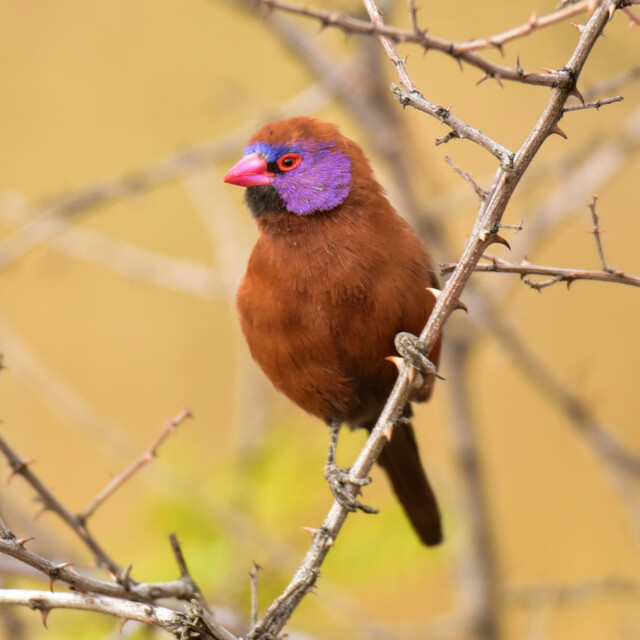
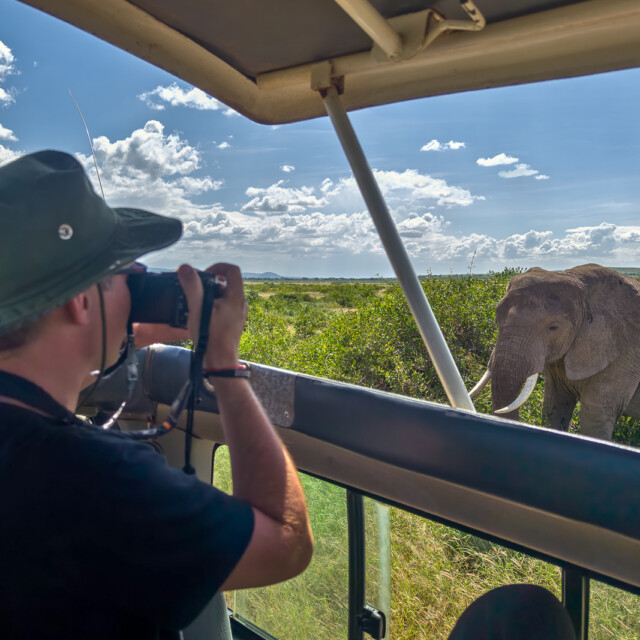
Itinerary
Itinerary
Day 1: Arrival Johannesburg (Tambo International Airport)
Our South Africa birding tour begins in Johannesburg. After settling into our hotel, the group will gather for a welcome dinner—an ideal opportunity to get to know your fellow travellers, discuss the journey ahead, and preview the exceptional birding experiences to come.
Overnight Johannesburg: Afrika Sky Boutique Hotel or similar
Day 2: Johannesburg to Dullstroom
Today we will travel eastward into Mpumalanga Province toward the charming highland town of Dullstroom, approximately 250 kilometres from Johannesburg. We will make birding stops along the way to break up the drive.
Perched at elevations ranging from 2,000 to 2,250 metres (6,500 to 7,400 feet), the surrounding habitat is characterized by sweeping grasslands and rocky hillsides—ideal for high-altitude grassland species. Time permitting, an afternoon excursion will offer an early introduction to the region’s birdlife. Target species in the area include the endemic Southern Bald Ibis, Cape Longclaw, Ant-eating and Buff-streaked Chat, Rufous-breasted Sparrowhawk, Wing-snapping Cisticola, Cape Crow, and Common Buzzard, among many others.
Overnight Dullstroom: Rose Cottage or similar
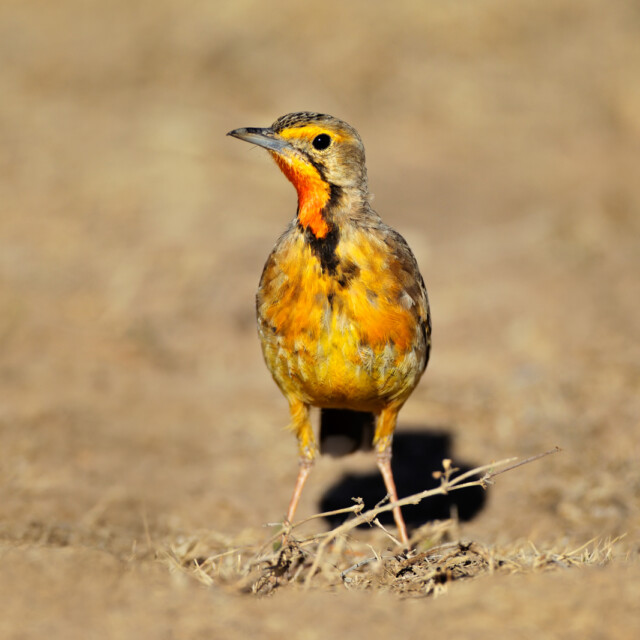
Day 3: Dullstroom to Blyde River Canyon
The day begins with a warm cup of coffee or tea accompanied by rusks—South Africa’s beloved traditional dunking biscuits. From town, it is a short drive to the scenic Verloren Vallei Nature Reserve, a high-altitude Ramsar Wetland of International Importance nestled in the Steenkampsberg mountain range.
Verloren Vallei Nature Reserve is a haven for wetland and grassland birding, encompassing over thirty near-pristine wetlands—including seasonal and permanent marshes, mountain streams, peatlands, and natural springs—all set within a high-altitude grassland landscape. This diversity of wetland types supports a rich array of birdlife, including several sought-after and endemic species. Notable highlights include the localized Grey-winged (E) and Red-winged Francolin, Blue Crane, the striking Gurney’s Sugarbird (E), and the vulnerable and endemic, Yellow-breasted Pipit. Other key species in the area include Ant-eating Chat, Eastern Long-billed Lark (E), Pale-crowned and Wing-snapping Cisticola, offering birders an excellent introduction to South Africa’s montane avifauna.
The journey continues to Mount Sheba, a secluded forest retreat approximately two hours away, perched on the edge of the Mpumalanga escarpment. Here, steep mountain slopes are cloaked in dense afro-montane forest, gradually giving way to rolling highland grasslands adorned with striking Protea species.
The area offers outstanding opportunities to observe a range of sought-after species in a setting of serene natural beauty. A walk through the ancient forest may reveal the vibrant Narina Trogon, the endemic Knysna Turaco and Chorister Robin-chat, as well as the elusive, White-starred Robin. Other notable species include Cape Batis, Yellow-throated Woodland Warbler, Olive Woodpecker, Lemon Dove, Blue-mantled Crested Flycatcher, Grey Cuckooshrike, and the brilliant African Emerald Cuckoo. The forest streams and clearings attract Mountain Wagtail and Forest Canary (E), while the impressive Crowned Eagle soars above. Of particular interest, Mount Sheba is considered one of South Africa’s top sites for the elusive and highly sought-after Orange Ground Thrush—a true gem for any forest birder.
The journey continues into the awe-inspiring Blyde River Canyon, one of the largest canyons in the world and often hailed as the planet’s largest “green canyon” due to its dense subtropical vegetation. With some of the deepest cliffs found anywhere on Earth, this natural marvel is the second-largest canyon in Africa and widely regarded as one of the continent’s greatest scenic wonders.
Carved along the escarpment of the Drakensberg, the canyon presents a spectacular mix of landscapes, from towering cliffs and plateau grasslands to riverine thickets, broad-leaved woodlands, and pockets of Afromontane forest. This mosaic of habitats supports an impressive range of biodiversity, including several antelope species, Nile Crocodiles, Hippopotamus, and all the primate species found in South Africa.
A stop at the famous Three Rondavels viewpoint provides breathtaking views over the Lowveld and excellent birding in the surrounding montane grasslands. Key target species here include the endemic Drakensberg Prinia, Cape Rock Thrush, and Buff-streaked Chat, along with Familiar Chat, White-bellied Sunbird, Streaky-headed Seedeater, and Mocking Cliff Chat. The area is also rich in cisticolas, with Wing-snapping, Wailing, Levaillant’s, and Croaking Cisticolas likely to be encountered. The canyon cliffs offer prime vantage points for spotting raptors such as Cape Vulture, Verreaux’s Eagle, Rock Kestrel, Lanner Falcon, and Peregrine Falcon, making this a highlight not only for its dramatic scenery but also for its outstanding birdlife.
After a rewarding day immersed in the birdlife and dramatic landscapes of the canyon, guests can unwind at the Blyde River Canyon Resort. Nestled within this spectacular setting, the resort offers comfortable accommodations surrounded by natural beauty, with views of forested slopes and red sandstone cliffs.
Overnight: Blyde River Canyon Resort
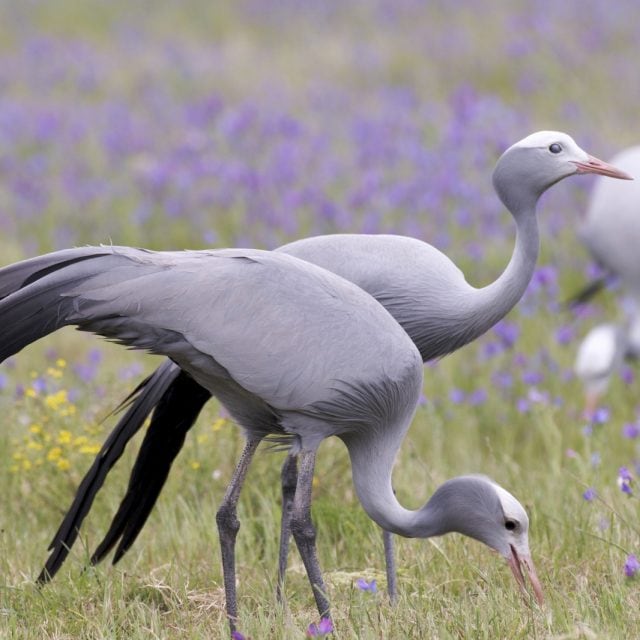
Day 4: Blyde River Canyon to Kruger NP – Satara Rest Camp
The day begins with an early morning walk through the rocky woodlands surrounding the lodge, an ecotone where the highveld grasslands give way to the warmer lowland savannah. This transition zone is rich in biodiversity and offers excellent birding opportunities. The hiking trail winds through this habitat, providing sweeping views of the canyon's dramatic geological formations while offering close encounters with a variety of avian species. Likely sightings include Mocking Cliff Chat, Striped Pipit, Lazy Cisticola, White-throated Robin-chat, and African Firefinch, along with Swee Waxbill (NE), Yellow-breasted Apalis, Yellow-fronted Tinkerbird, Black-crowned Tchagra, and the striking Golden-breasted Bunting.
Following breakfast, the journey continues, with a possible stop at a canyon viewpoint for a final panoramic look across this vast landscape before descending the escarpment into the Lowveld—South Africa’s iconic low-lying savannah region known for its rich wildlife and classic African scenery.
After roughly an hour and a half of travel, the route arrives at the renowned Orpen Gate, marking the western entrance into the world-famous Kruger National Park. This gateway opens into one of Africa’s premier wildlife reserves—an expansive, unfenced wilderness teeming with biodiversity. The surrounding landscape begins to shift, with open savannahs and thornveld hinting at the rich wildlife encounters that await within one of the continent’s most iconic conservation areas.
Kruger National Park spans nearly 20,000 square kilometres, making it the tenth largest game reserve on the planet. Its reputation for exceptional big game viewing is well deserved, with robust populations of African Elephant, African Buffalo, and Lion often spotted with relative ease. In addition to these iconic species, the park supports an extraordinary diversity of wildlife, boasting close to 150 other mammal species, making it one of Africa’s most rewarding destinations for wildlife enthusiasts.
Widely regarded as the premier birding destination in southern Africa, Kruger National Park offers an unparalleled combination of vast wilderness and diverse habitats. Its sheer size and ecological richness create the perfect conditions for an exceptional variety of birdlife. 520 bird species have been recorded here —an impressive figure that underscores its status as a hotspot for avian diversity and density.
Once inside Kruger National Park, travel slows considerably—not due to the roads, but because of the sheer abundance of birdlife demanding attention at every turn. The route toward the first rest camp offers an exciting introduction to the park’s avifauna. Likely sightings along the way include striking species such as Green-winged Pytilia, Brown-crowned Tchagra, African Grey Hornbill, and both Southern Yellow-billed and Southern Red-billed Hornbills. Common roadside highlights also include Swainson’s Spurfowl, Crowned Lapwing, Magpie Shrike, and a trio of rollers—Lilac-breasted, European, and Purple.
Oxpeckers, both Red-billed and Yellow-billed, are frequently seen clinging to larger mammals, while the woodlands may reveal Common Scimitarbill, Secretarybird, and the unmistakable Southern Ground Hornbill. Bushshrikes such as Grey-headed and the vibrant Orange-breasted Bushshrike add colour to the thickets. Raptors are particularly well represented in this area, with a strong chance of encountering Gabar Goshawk, Wahlberg’s Eagle, Tawny Eagle, Martial Eagle, Bateleur, and Brown Snake Eagle, among others, soaring or perched across the open savannahs.
In the south-central region of Kruger National Park, the basaltic soils support lush grass growth and limit dense shrub cover, creating expansive open savannahs. This landscape is particularly favourable to grazing species like Plains Zebra, Common Wildebeest, and African Buffalo. Their presence, in turn, sustains large predator populations, including formidable Lion prides and tightly knit Spotted Hyaena clans. Smaller herbivores such as Impala and Common Warthog also thrive in this habitat, but their abundance attracts agile predators like Leopard, African Wild Dog, and Cheetah, adding to the area's rich and dynamic wildlife interactions.
Target birds: Martial Eagle, African Hawk-Eagle, Bateleur, Brown Snake-Eagle, Lesser Spotted Eagle, African Cuckoo Hawk, Rock Kestrel, Eurasian Hobby, Verreaux’s Eagle Owl, African Scops-Owl, Lappet-faced Vulture, Hooded Vulture, White-headed Vulture, Saddle-billed Stork, Marabou Stork, Kori Bustard, Black-bellied Korhaan, Red-crested Korhaan, Double-banded Sandgrouse, Southern Ground Hornbill, White-crowned Lapwing, Dwarf Bittern, Little Bittern, African Crake, African Mourning Dove, Southern Carmine Bee-eater, Red-chested Cuckoo, African Cuckoo, Diederik Cuckoo, Brown-headed Parrot, Bennett’s Woodpecker, Lilac-breasted Roller, Greater Blue-eared Starling, Grey Penduline Tit, Chestnut-backed Sparrow-Lark, Dusky Lark, Stierling's Wren-Warbler, Village Indigobird, Dusky Indigobird, Red-billed Oxpecker, Gorgeous Bushshrike, Orange-breasted Bushshrike, Grey-headed Bushshrike, White-crowned Helmetshrike, Lesser Grey Shrike, Eurasian Golden Oriole, Scarlet-chested Sunbird, White-bellied Sunbird.
Arrival at Satara Rest Camp is expected in the late afternoon. Despite its relatively large size, Satara retains a rustic charm, with most of its accommodation arranged in circular formations that echo traditional African layouts. Within the camp itself, the resident African Scops Owl may be spotted perched quietly in the trees. As dusk falls, it is also worth keeping an eye out for the elusive African Wildcat, which is occasionally seen slinking through the camp in the evenings.
Dinner is served at the camp’s open-air restaurant, where guests can unwind on the wide veranda while listening to the evocative sounds of the African night. Afterward, a stroll along the camp’s perimeter fence can be rewarding—especially near the water hole, where nocturnal activity may provide unexpected sightings under the stars.
Overnight: Satara Rest Camp

Day 5: Kruger NP – Satara to Skukuza Rest Camp
The day begins early, with a quick coffee and a rusk enjoyed before setting off at first light, timed with the opening of the camp gates. This marks the start of a full day immersed in the rich wildlife and birdlife of Kruger National Park—affectionately known as “Kruger” by locals. The morning hours offer some of the best opportunities for sightings, as both birds and mammals are most active during the cooler part of the day.
Breakfast is typically enjoyed en route, allowing more time in the field, and a pause at one of the park’s well-equipped picnic sites or rest camps provides a welcome break for lunch. With vast open savannah, woodland patches, and riverine corridors to explore, the day promises a rewarding blend of birding and big game viewing in one of Africa’s most celebrated wilderness areas.
Exploring Kruger National Park from the comfort of a vehicle offers an ever-changing panorama of ecosystems and wildlife, and it quickly becomes clear why this iconic reserve is so cherished. The drive between Satara and Skukuza winds through a mosaic of habitats that highlight the park’s ecological richness—from expansive grasslands to broad-leaved woodlands. Each habitat holds its own distinctive set of bird and mammal species, making the journey an ongoing discovery.
Open grasslands and woodland edges may reveal sought-after species such as African Cuckoo-hawk, Dark Chanting Goshawk, Bushveld Pipit, and the subtly charming Green-capped Eremomela. This region is also particularly rewarding for sightings of large terrestrial birds like Common Ostrich, Kori Bustard, and Secretarybird, while flocks of Red-billed Quelea can fill the skies in dazzling aerial displays. Iconic species such as Southern Ground Hornbill, Sabota and Chestnut-backed Sparrow-larks, Lesser Grey Shrike, Burchell’s Starling, and Bennett’s Woodpecker add further variety.
The route is not just exceptional for birding—it is also one of the best areas for encountering rare and significant mammals. The elusive Black Rhinoceros and the localized Lichtenstein’s Hartebeest may make an appearance alongside more commonly seen species such as Elephant, Giraffe, Lion, and numerous antelope.
The journey southward continues at a leisurely pace, with Skukuza Rest Camp reached by late afternoon. Should time allow a stroll around the campgrounds provides an opportunity to spot unique flora and fauna. As the park’s largest and main headquarters, Skukuza is nestled among lush, well-vegetated grounds, featuring towering trees that line the riverbanks. The camp is a prime spot for observing fascinating nocturnal creatures, such as the dove-sized Wahlberg’s Epauletted Fruit Bat and the charming South African Thick-tailed Galago. Additionally, birdwatching within the camp can be highly rewarding, with regular sightings of Crowned Hornbill, Grey-headed Bushshrike, and African Green Pigeon among the diverse avian residents.
After compiling the day's trip lists, a relaxing dinner awaits at the camp’s restaurant, offering picturesque views of the Sabie River. The vast, unpolluted skies here are perfect for stargazing—do not forget to pause and gaze up at the stunning Milky Way before heading to the room, a breathtaking sight that truly captures the magic of the wilderness.
Overnight: Skukuza Rest Camp

Day 6: Kruger National Park - Skukuza Camp
A full day is dedicated to exploring this part of Kruger National Park. After an early breakfast, the day may begin with a walk around the camp before venturing into the park. The camp itself offers excellent birding opportunities. The Sycamore Figs along the river are particularly fruitful, drawing in Trumpeter Hornbill, African Green Pigeon, and Purple-crested Turaco when in season. The reed banks visible from the walkway provide a prime location for spotting Red-faced Cisticola, Common Waxbill and Bronze Mannikin.
The camp is home to six species of flycatchers, including Grey Tit-flycatcher, African Paradise Flycatcher, Southern Black Flycatcher, African Dusky Flycatcher (a winter vagrant), Spotted Flycatcher (a summer migrant), and Ashy Flycatcher. In winter, the flowering aloes attract a dazzling array of sunbirds such as Scarlet-chested, White-bellied, and Marico Sunbird, as well as Black-headed Oriole and various weaver species. The river itself is also worth checking for sightings of African Black Duck and the quirky Hamerkop, known for its distinctive nest-building behaviour.
Based on the species observed thus far and any targets still on the list, the journey could take one of two routes: heading south towards Lower Sabie Rest Camp or venturing west along the legendary Doispane Road, a gravel stretch renowned among Kruger enthusiasts. With a network of both tarred and dirt roads to explore in the region, the day promises to be filled with endless birding and wildlife encounters. Breakfast and lunch can be enjoyed at one of the nearby rest camps or at one of the charming picnic spots scattered throughout the park, offering a perfect opportunity to pause and take in the stunning surroundings.
Just a few kilometres west of Skukuza, on the route toward Kruger Gate, a turnoff leads to the celebrated Lake Panic Bird Hide a prime birding hotspot, offering exceptional opportunities for observing and photographing a wide range of species, including Malachite and Pied Kingfisher, African Jacana, Water Thickknee, Striated Heron, Wire-tailed Swallow, White-faced Whistling Duck, Black Crake, and Thick-billed Weaver. The area is also home to Nile Crocodiles and hippos, with occasional sightings of a relaxed Leopard that frequents the vicinity.
The landscape surrounding Skukuza is defined by its rich riparian zones, where towering trees flank the riverbanks, and dense thickets extend away from the watercourses. These permanent water sources draw impressive numbers of Impala, a key prey species for Leopards, making this an ideal area to scan for big predators such as Lion, African Wild Dog, and Spotted Hyaena. The Sabie River and its tributaries also host an abundance of birdlife, including sought-after and elusive species like African Finfoot, African Fish Eagle, Goliath Heron, Great Egret, Giant Kingfisher and Saddle-billed Stork, which are seen here with surprising regularity.
In the surrounding woodlands and Green-backed Camaroptera, Kurrichane Thrush, Grey Tit-flycatcher, Black-headed Oriole, Brubru, Retz’s Helmetshrike, Black Cuckooshrike, and Yellow-breasted Apalis. The mixed woodland also supports Southern Black Tit, Red-billed and African Firefinch, Tawny-flanked Prinia, Cardinal and Bearded Woodpecker, Brown-crowned and Black-crowned Tchagra, and both Burnt-necked and Yellow-bellied Eremomela, among many others. The diversity and density of species here make it a highlight for birders and wildlife enthusiasts alike.
As the afternoon draws to a close, the journey returns to Skukuza Rest Camp, where the day's sightings can be reviewed and bird lists updated in the comfort of this iconic Kruger camp. Dinner is enjoyed at the camp’s open-air restaurant.
Overnight: Skukuza Rest Camp
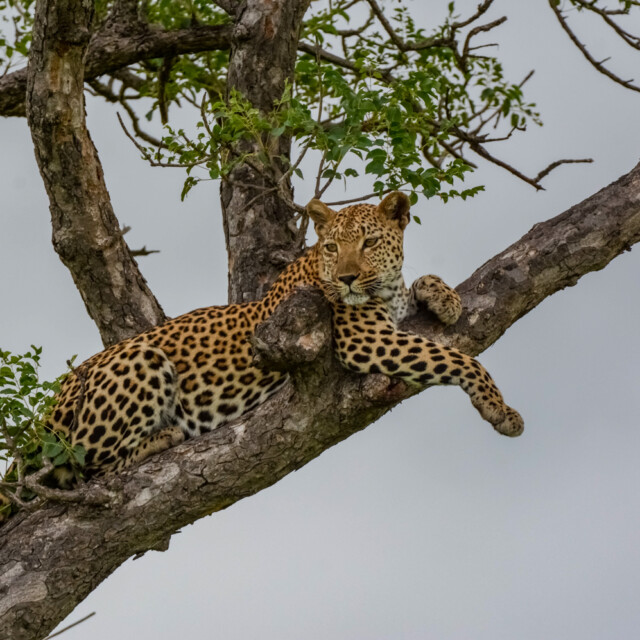
Day 7: Kruger NP to Wakkerstroom
An early departure marks the start of a long but rewarding journey to the high-altitude grasslands of Wakkerstroom. Breakfast and lunch will be enjoyed en route, with several carefully chosen birding stops along the way to break up the drive and make the most of the diverse habitats encountered during the transition from Lowveld savannah to montane grassland.
A key stop en route will provide the opportunity to search for the South African Cliff Swallow, a range-restricted breeding endemic often seen nesting under bridges or culverts. As the route climbs into expansive grassland terrain, the open landscapes offer a chance to spot striking species such as the endemic Southern Bald Ibis, the stately Blue Crane—South Africa’s national bird—and the regal, Grey-crowned Crane. These grasslands are also home to a variety of other highland birds, making the drive a productive birding experience.
Arrival in Wakkerstroom is typically late-afternoon, with the wetland marsh on the town's edge often being the first birding stop. This productive site is known for its elusive wetland specialists, offering a good chance of encountering shy species such as Little Rush Warbler and African Rail—and with a touch of luck, even the notoriously secretive Red-chested Flufftail. More conspicuous species often seen roosting in the late afternoon include African Swamphen, Purple Heron, Cape Shoveler, and Cape Weaver, adding vibrant activity to the wetland scene.
After a rewarding afternoon of birding, check-in will follow at a comfortable guesthouse just outside Wakkerstroom. Dinner will be enjoyed at one of Wakkerstroom’s well-regarded restaurants.
Overnight Wakkerstroom: Forellenhof Guest House or similar
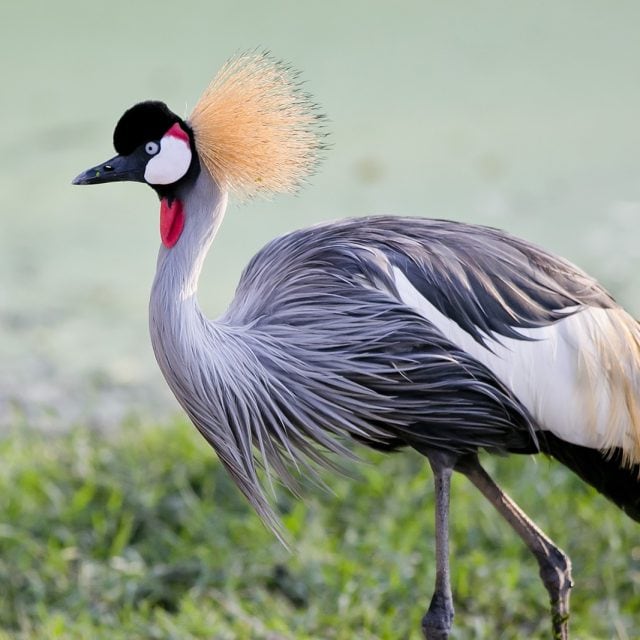
Day 8: Wakkerstroom
A full day in Wakkerstroom begins early, with coffee in hand before setting off into the grasslands in search of two of South Africa’s most sought-after endemics: Rudd’s and Botha’s Larks. Since these birds are endangered, any sighting would be an exceptional stroke of luck. While scanning for these rarities, it is also possible to encounter other lark species such as Eastern Clapper, Eastern Long-billed (E), Spike-healed Lark, and Red-capped Larks.
The broader Wakkerstroom landscape is a mosaic of mountainous terrain, hidden kloofs, vleis, and spring-fed wetlands, all contributing to its ecological richness. This region plays a vital role as a National Freshwater Ecosystem Priority Area, lying near the headwaters of the Vaal, Tugela, and Pongola Rivers. Its conservation importance is underscored by its status as a protected area under the Protected Areas Act, safeguarding it from mining and ensuring the preservation of its unique biodiversity.
Wakkerstroom’s avian highlights extend well beyond its famed larks. High-altitude grasslands and farmlands surrounding the town support a variety of other sought-after endemics, including the vivid, Yellow-breasted Pipit, and Blue Korhaan. Within the village itself, the bold and vocal Bokmakierie is often seen, while the elusive Red-throated Wryneck, can sometimes be spotted in gardens or wooded patches.
Following lunch, the afternoon may be spent exploring nearby sites that offer opportunities to observe the impressive White-bellied and Denham’s Bustards striding across open fields. Another local area is a reliable spot for more specialized species such as the Buff-streaked Chat (E), Mountain Wheatear, Sentinel Rock Thrush (E), and the enigmatic African Rock Pipit (E)—often more easily heard than seen among rocky outcrops.
A wide variety of birds can be encountered in the Wakkerstroom area, adding further depth to the region’s remarkable birdlife. Notable species include Jackal Buzzard (NE), Southern Bald Ibis (NE), Cape Crow, and Pied Starling(E). High-altitude specialists such as Bush Blackcap(E), and Drakensberg Prinia (E) are commonly associated with the rugged terrain, while summer visitors like Amur Falcon and Lesser Kestrel bring seasonal flair to the skies.
Additional species of interest in the wetlands include Macca Duck, Southern Pochard, Little Grebe, African Snipe, Little Bittern, Purple Heron, Yellow-billed Egret, Black-crowned Night Heron. With a bit of luck—and a quiet approach—there is also a chance of spotting the elusive African Clawless Otter, a highly sought-after mammal. A glance skyward may reveal aerial species such as Greater Striped, White-throated, and South African Cliff Swallow (BE), as well as Little and White-rumped Swift.
Grasslands and farmlands may also reveal Denham’s Bustard, and both Grey Crowned and Blue Crane, along with the elusive Grey-winged (E) and Red-winged Francolin. The distinctive call of the Quailfinch often gives away its presence, even if sightings remain rare. Remarkably, all five South African species of harrier are known to frequent Wakkerstroom at various times of year, offering exciting opportunities for raptor enthusiasts.
After a brief respite at the accommodation to freshen up, we will return to town for dinner. This will be the perfect time to review and update trip lists, sharing stories and celebrating the lifers spotted so far.
Overnight Wakkerstroom: Forellenhof Guest House or similar
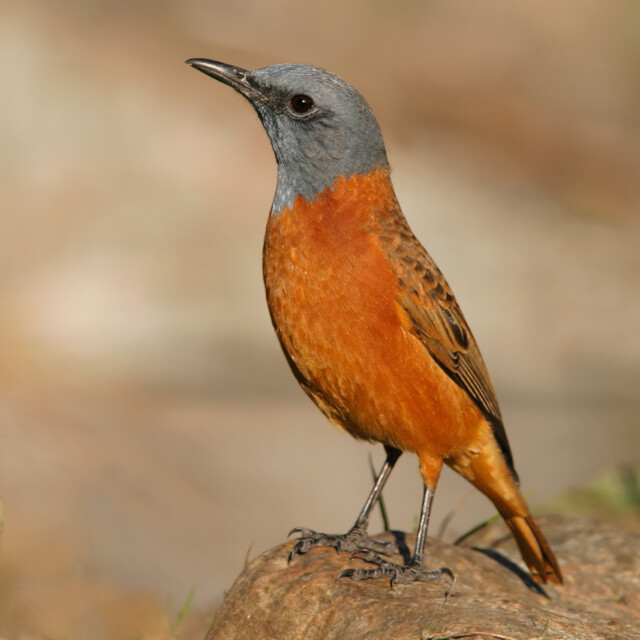
Day 9: Wakkerstroom to uMkhuze GR and iSimangaliso Wetland Park
After a productive morning of birding, we will head eastward, gradually descending from the highlands to the subtropical lowlands. Our journey takes us toward the Indian Ocean coast, where we’ll continue our birding adventure in two of KwaZulu-Natal’s premier conservation areas—uMkhuze Game Reserve, known for its exceptional diversity of savanna and wetland species, and the iSimangaliso Wetland Park, a UNESCO World Heritage Site offering a remarkable mix of coastal, wetland, and forest habitats.
Beyond its avian riches, uMkhuze is also a stronghold for iconic African wildlife, offering excellent opportunities to view members of the Big Five, along with cheetah, African wild dog, and the elusive suni antelope. Nearby, the Muzi and Mpempe Pans enhance the birding experience further, drawing water- and grassland-associated species to these vibrant wetland systems.
After a rewarding day of birding and encounters the journey continues to comfortable accommodation located just outside the park. The evening offers a chance to relax over a hearty meal and reflect on the highlights of the adventure so far—even sparking ideas for the next birding destination. A restful night’s sleep follows, bringing a perfect close to another memorable day in the wild.
Overnight: Kuleni Game Park, Mazuri Bush Cottages or similar
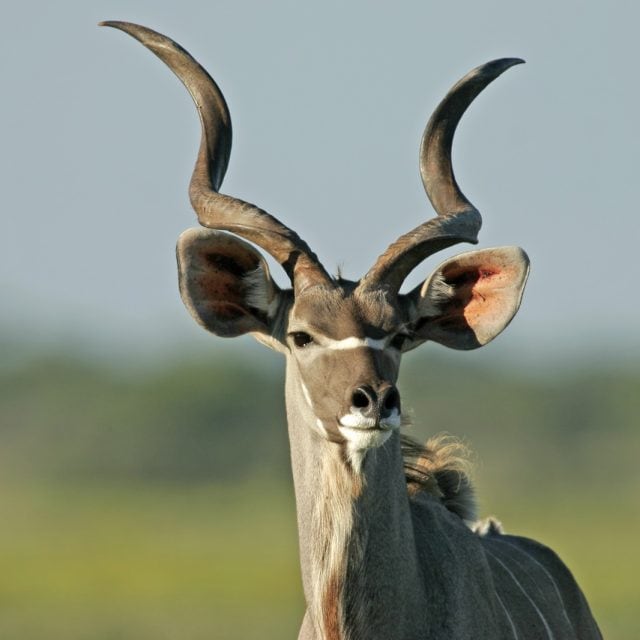
Day 10: uMkhuze GR and iSimangaliso Wetland Park
A full day is dedicated to exploring the remarkable ecological diversity of uMkhuze Game Reserve and the surrounding iSimangaliso Wetland Park. This region supports an exceptional array of wildlife, offering opportunities to observe not only a wide variety of bird species—many of which are highly sought-after by birders.
uMkhuze Game Reserve, covering 40,000 hectares (150 square miles), was declared a protected area as early as 1912, making it one of South Africa’s oldest conservation areas. Despite its modest size—just 2% the size of Kruger National Park—uMkhuze is celebrated for its extraordinary biodiversity. The reserve encompasses an impressive range of habitats, including acacia savannah, sand and riverine forests, mixed woodland, open grassland, freshwater pans, and rocky ridges. This mosaic of ecosystems supports an astonishing 457 recorded bird species, representing over half of South Africa’s total bird diversity, earning uMkhuze a near-mythical status among birders and naturalists.
Target birds: Crowned Eagle, Long-crested Eagle, Black-chested Snake Eagle, African Cuckoo Hawk, Southern Banded Snake Eagle, Palm-nut Vulture, Secretarybird, European Honey Buzzard, Sooty Falcon, African Marsh Harrier, Greater Flamingo, Lesser Flamingo, Yellow-billed Stork, Goliath Heron, Black-crowned Night-Heron, Greater Painted-snipe, African Pygmy Kingfisher, Blue-cheeked Bee-eater, African Wood-Owl, Buff-spotted Flufftail, Common Quail, Black-bellied Korhaan, Trumpeter Hornbill, Crowned Hornbill, Bearded Scrub-Robin, Eastern Nicator, Gorgeous Bushshrike, Purple-banded Sunbird, Broad-billed Roller, Rosy-throated Longclaw, African Broadbill, Pink-throated Twinspot and Rudd’s Apalis.
Overnight: Kuleni Game Park, Mazuri Bush Cottages or similar
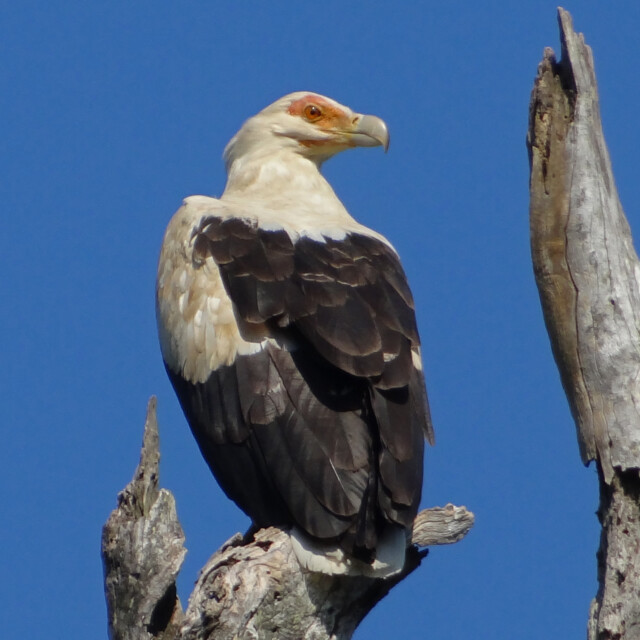
Day 11: iSimangaliso Wetland Park to St Lucia
Today we will head to the renowned coastal town of St Lucia, a popular holiday destination nestled within the iSimangaliso Wetland Park World Heritage Site. Time here is devoted to exploring the Eastern Shores section of the park—a spectacular landscape where coastal forests, grasslands, freshwater pans, and pristine beaches converge. This diverse environment provides excellent opportunities for both birding and general wildlife viewing.
Covering 3,280 km², iSimangaliso Wetland Park was established to protect the ecologically vital Lake St. Lucia, South Africa’s most important waterbird breeding site. Recognised as the country’s first UNESCO World Heritage Site in 1999 and designated a Ramsar Wetland of Importance, the park encompasses a network of reserves and conservation areas that safeguard a rich diversity of unique flora and fauna. Formerly known as the Greater St. Lucia Wetland Park, it was renamed in 2007—iSimangaliso meaning “a miracle” or “something wondrous” in Zulu.
Overnight: St Lucia Eco Lodge or similar

Day 12: iSimangaliso Wetland Park and St Luci
The extraordinary diversity of fauna and flora within iSimangaliso Wetland Park can be attributed to its wide array of ecosystems, each supporting distinct wildlife populations. From vibrant coral reefs and pristine sandy beaches to lush subtropical dune forests, expansive savannahs, and dynamic wetlands, the park’s varied landscapes create a rich tapestry of habitats. Iconic mammal species found here include the African Elephant, Leopard, Black and White Rhinoceros, African Buffalo, Hippopotamus, and Nile Crocodile. The waters surrounding the park are teeming with life, home to whales, dolphins, and marine turtles, all of which contribute to the park's designation as a critical conservation area.
If time allows, a visit to the St Lucia estuary mouth offers a unique opportunity to explore one of the region’s prime shorebird habitats. This dynamic coastal environment is a haven for a variety of waders and seabirds, particularly during the summer months. Several tern species are often present, including Caspian, Swift, Sandwich, Common, and Little Terns, frequently seen diving, and roosting along the shoreline. The area also attracts large waterbirds such as Great White and Pink-backed Pelicans, Yellow-billed and Woolly-necked Storks, and Lesser Flamingos feeding in the shallows. Among the waders, species like Ruff, Ruddy Turnstone, Grey Plover, Pied Avocet, Chestnut-banded and White-fronted Plovers, and the striking African Oystercatcher may also be encountered.
Notable target species in this richly diverse region include Trumpeter and Crowned Hornbills, Livingstone’s Turaco. The understorey and mid-canopy layers are home to forest specialists such as the Blue-mantled Crested Flycatcher, Brown Scrub-Robin (NE), and Rudd's Apalis. Among the more elusive but sought-after species are the Southern Brown-throated Weaver and the Green Twinspot. Grassland and edge habitats may reveal flocks of Orange-breasted Waxbills, Cuckoo Finches, and Red-backed Mannikins. The Grey Sunbird and the Black-bellied Starling add splashes of colour to the scene. Wetland and thicket areas support vocal species like the Little Rush Warbler and Lesser Swamp Warbler, while aerial foragers such as the Blue-cheeked Bee-eater and the migratory European Honey Buzzard round out the diverse birding experience.
Overnight: St Lucia Eco Lodge or similar
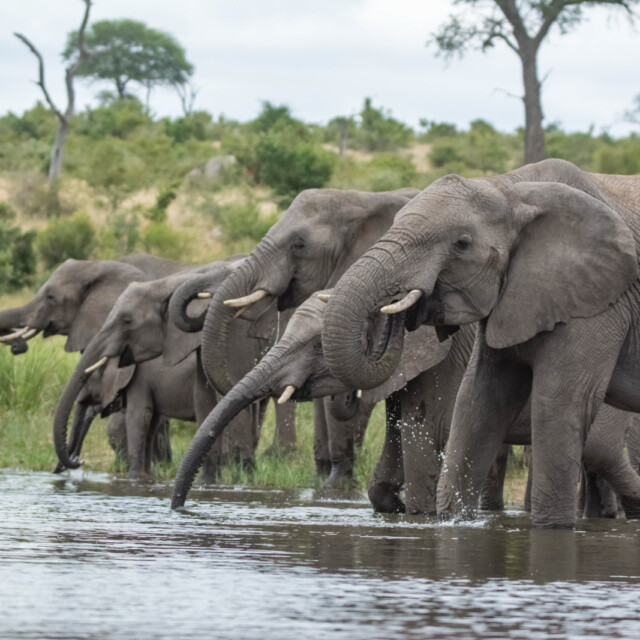
Day 13: Mtunzini
The journey continues inland from the coast toward Eshowe, a historic town nestled in the heart of KwaZulu-Natal's Zululand region. En route, stops are made at Ongoye and Umlalazi Nature Reserves—two ecologically significant protected areas that safeguard a variety of unique habitats, including coastal forests, estuarine systems, wetlands, and moist coastal grasslands. These biodiverse landscapes support a rich array of birdlife, including several regional endemics and species of conservation interest.
Ongoye Forest is a vital breeding ground for the Eastern Bronze-naped Pigeon and provides critical habitat for the endangered Spotted Ground Thrush. With over 165 bird species recorded, the forest is a biodiversity hotspot and holds particular significance as the only location in southern Africa where the elusive Green Barbet occurs.
Umlalazi Nature Reserve, located near the coastal town of Mtunzini in KwaZulu-Natal, protects a rich mosaic of estuarine habitats, coastal dune forest, mangroves, and salt marshes. This 1,028-hectare reserve is a haven for birdlife, offering a mix of forest, wetland, and shoreline species in proximity. It is one of the few places where the rare Palm-nut Vulture can be reliably seen, often near raffia palms. Umlalazi also supports species such as Mangrove Kingfisher and African Finfoot.
Overnight: Mtunzini, Birds of Paradise or similar

Day 14: Eshowe to Karkloof
This morning is dedicated to exploring Dlinza Forest Nature Reserve, a 250-hectare patch of mature coastal scarp forest renowned as one of southern Africa’s premier birding locations. A network of forest trails and a 125-metre-long, 25-metre-high canopy walkway offer excellent opportunities to observe birdlife from both ground level and the treetops.
At Dlinza, key target species include the elusive Spotted Ground Thrush and Eastern Bronze-naped Pigeon. In the canopy and mid-levels, birders may encounter the Narina Trogon, Green Malkoha, Trumpeter Hornbill and Olive Woodpecker, while the melodious Chorister Robin-chat (E) and Terrestrial Brownbul are often active in the lower strata. Forest clearings and edges may reveal Lemon Dove, Green Twinspot, African Firefinch, and Red-backed Mannikin. Sunbirds such as the Olive and Collared add flashes of iridescence, and the striking Dark-backed Weaver is another frequent sighting.
Target birds in this region include a mix of forest specialists, grassland rarities, and striking raptors. Key species include the Eastern Bronze-naped Pigeon and the endemic Green Barbet, both typically found in forested areas. Other forest dwellers include Spotted Ground-Thrush, Woodwards' Batis, Narina Trogon, Knysna Turaco (E), Blue-mantled Crested-Flycatcher, Yellow-streaked Greenbul, Green Twinspot, Olive Woodpecker, Olive Bush-Shrike, Grey Cuckooshrike, Scaly-throated Honeyguide, African Emerald Cuckoo, and Klaas’s Cuckoo. Among the secretive grassland and wetland species are Black Coucal, Greater Painted Snipe, Lesser Moorhen, and Red-chested Flufftail. Raptors feature prominently, with African Crowned Eagle, African Marsh-Harrier, Little Sparrowhawk, Black Sparrowhawk, African Goshawk, and Rufous-breasted Sparrowhawk patrolling the skies. Additional highlights include the Southern Bald Ibis (NE), Chorister Robin-Chat (E), Striped Pipit, Croaking Cisticola, Grey Sunbird, and the ever-charismatic Trumpeter Hornbill.
The route leads into the picturesque Karkloof region, a verdant landscape known for its mist belt forests—cool, moisture-laden woodlands dominated by towering evergreen trees. Frequently veiled in mist, these forests offer a magical atmosphere and serve as a vital refuge for forest-adapted wildlife. As one of KwaZulu-Natal’s key biodiversity hotspots, the Karkloof provides exceptional birding opportunities, particularly for those in search of rare and range-restricted species associated with Afro-montane habitats.
This forested hill range near Howick harbours several prized southern African endemics, including the vivid Knysna Turaco, elusive Bush Blackcap (E), boldly patterned Olive Bushshrike, and vocal Barratt’s Warbler (NE), along with the Swee Waxbill (NE), Forest Canary (E), and Forest Buzzard (E). In addition, the region supports a rich array of more widespread but desirable species such as African Emerald Cuckoo, Olive Woodpecker, Cape Batis, African Olive Pigeon, Long-crested Eagle, Black-headed Oriole, Red-backed Mannikin, White-starred Robin, Yellow-throated Woodland Warbler, Red-collared Widowbird, and Brimstone Canary.
Highlights of the day include visits to Benvie Gardens, a beautifully landscaped private garden that attracts an array of forest birds, and Midmar Nature Reserve, a diverse area of grassland and woodland habitat surrounding the Midmar Dam, known for its rich birdlife and scenic views. The reserve is also known to host globally threatened species like the Blue Crane and Grey Crowned Crane, and Black-rumped Buttonquail, Short-tailed Pipit, Denham’s Bustard, and Black-winged Lapwing.
Overnight: Halliwell Country Lodge or similar

Day 15: Karkloof to Sani Pass
Leaving the lush forests of Karkloof behind, the journey continues into the dramatic foothills of the majestic Drakensberg Mountains—a UNESCO World Heritage Site renowned for its towering basalt cliffs, cascading waterfalls, and sweeping montane vistas. The next two nights are spent exploring this breathtaking region, which offers a rich tapestry of habitats, including montane grasslands, misty wetlands, and patches of indigenous forest.
A major highlight is a visit to the legendary Sani Pass, a rugged mountain route that winds its way up to the Lesotho border. As one of southern Africa’s premier alpine birding destinations, the pass provides access to a high-altitude world of unique species, with chances to see several Lesotho specials and range-restricted endemics. The combination of dramatic landscapes and exceptional biodiversity makes this a must-visit area for anyone seeking highland birds and unforgettable scenery.
Overnight: Cedar Gardens or similar
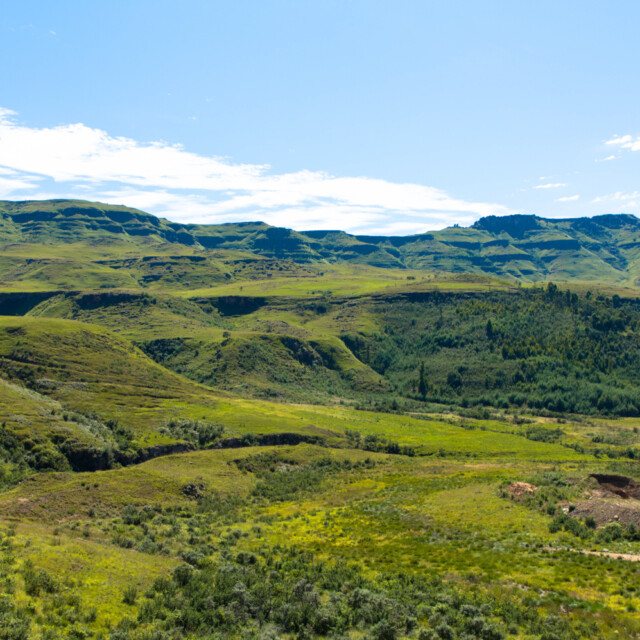
Day 16: Sani Pass
A full day is dedicated to exploring the iconic Sani Pass, one of South Africa’s most celebrated birding routes. This rugged ascent offers remarkable access to the Drakensberg Escarpment and highland habitats, where many of the region’s endemic species can be found amid breathtaking mountain scenery.
The journey begins in the grasslands at the base of the pass, prime habitat for striking species such as Secretarybird, Denham’s Bustard, Grey Crowned Crane, and Ant-eating Chat. Lower elevations also support small patches of temperate forest and scrub, which host elusive and localized species including Drakensberg Prinia (E), Bush Blackcap (E), Chorister Robin-Chat (E), Brown-backed Honeybird an Swee Waxbill (NE).
As the road winds upward, the vegetation transitions into Protea-dominated slopes. These areas provide excellent viewing of Malachite Sunbird, Gurney’s Sugarbird (NE), Ground Woodpecker (E), Cape Rock Thrush (E), Buff-streaked Chat (E) and Red-throated Wryneck. Wetlands along the way may reveal Fan-tailed Grassbird, while surrounding grasslands are home to Long-billed Pipit, Red-winged Francolin, Cape Grassbird (NE) and Wailing Cisticola. Thickets at mid-elevations are explored for Barratt’s Warbler (NE) and Greater Double-collared Sunbird (NE), with Karoo Prinia (NE) appearing closer to the tree line.
At higher altitudes, the landscape opens into alpine slopes where the charismatic Drakensberg Rockjumper (E) and the Drakensberg Siskin (E) become likely sightings. Overhead, both Bearded (Lammergeier) and Cape Vultures may be seen soaring on mountain thermals.
At the summit, the route crosses into Lesotho, where the high-altitude plateau provides superb birding in a dramatic setting. The views are vast, the birdlife distinctive, and a well-earned refreshment at the top lodge offers a moment to soak in the scenery before descending in the late afternoon.
Overnight: Cedar Gardens or similar

Day 17: Sani Pass to Durban-Flight to Cape Town
Today we will take a scenic drive to Durban and from there, a flight to Cape Town, marking the next exciting leg of the trip. This transition from the mountains to the vibrant coastal city provides a contrast of landscapes and experiences, setting the stage for new birding opportunities and exploration in one of South Africa’s most dynamic destinations.
The Western Cape, located in southern South Africa, is bordered by the Atlantic Ocean to the south and west, with folded mountain ranges inland. Its unique climate, shaped by winter rains, summer winds, and diverse topography, has fostered a high degree of endemism, resulting in the famous Fynbos floral kingdom. This distinctive environment also supports a unique birdlife, making the Western Cape a top destination for endemic species. Cape Town, South Africa's second-largest city and legislative capital, is known for its stunning beauty and charm. Nestled beneath the iconic Table Mountain, it is a port city with a rich cultural heritage.
Upon arrival in Cape Town, we will check in at a boutique hotel where we will stay for the next 4 nights. If time allows, we will visit the renowned Kirstenbosch Botanical Garden. Kirstenbosch National Botanical Garden, nestled on the slopes of Table Mountain, offers breathtaking views over the Cape Flats and the distant Hottentots-Holland Mountains. This lush, protected sanctuary is a haven for both flora and fauna. Among the remarkable bird species that inhabit the gardens, birdwatchers can look out for the striking Cape Sugarbird (E), Cape Spurfowl (NE), Olive Thrush, and Swee Waxbill (NE). The area also harbours the elusive Spotted Eagle-Owl, Black Sparrowhawk, as well as the vibrant Malachite and Orange-breasted Sunbirds (E). Additionally, the Forest Canary (E) adds a splash of colour to the diverse birdlife found in this spectacular setting.
This evening marks the first taste of Cape Town’s vibrant culinary scene .After dinner, guests can unwind and settle in for a well-deserved rest.
Overnight: Quayside Lodge Simons Town or similar

Day 18: West Coast National Park
Today we will visit the stunning West Coast National Park and the serene Langebaan Lagoon. After exploring these remarkable areas, the route continues to the Velddrif region, with a return pass through the iconic Paarl Rock.
Langebaan, nestled next to the West Coast National Park, offers an exceptional birding experience, particularly around the shallow, azure-hued Langebaan Lagoon. The lagoon is renowned for its migrating waders, making it a prime destination for birdwatching. The surrounding West Coast National Park, covering 36,260 hectares, is a haven for Strandveld birding and is identified as an Important Bird Area by BirdLife International. This park, located 120 km north of Cape Town, includes the beach and dune landscapes between Yzerfontein and Langebaan, as well as the stunning Saldanha Bay Islands.
Birding highlights around Langebaan include sightings of Common Ostrich, Grey-winged Francolin (E), Southern Black Korhaan (E), Cape Clapper Lark (NE), Cape Long-billed Lark (E), Karoo Scrub Robin, and Cape Penduline Tit. The lagoon and surrounding wetlands attract a variety of shorebirds, including Red Knot, Bar-tailed Godwit, Ruddy Turnstone, Grey Plover, Terek Sandpiper, Greater Sand Plover, and Eurasian Curlew, along with the local Chestnut-banded and Kittlitz’s Plovers. The area also supports impressive populations of Greater and Lesser Flamingos, South African Shelduck, Cape Shoveler, and other waterfowl.
The nearby Strandveld, with its characteristic coastal vegetation, is home to a rich assortment of birds such as Grey Tit (NE), Capped Wheatear, Fiscal Flycatcher (NE), and the magnificent Black Harrier (NE), a striking raptor considered one of the world’s most beautiful.
Overnight: Quayside Lodge Simons Town or similar

Day 19: Cape Pelagic
Departing from the scenic harbour of Hout Bay, this exhilarating pelagic excursion ventures deep into the nutrient-rich waters of the Atlantic Ocean, where the meeting of the Benguela and Agulhas currents creates one of the most productive marine environments on Earth. These open waters are a magnet for an astonishing diversity of seabirds and marine mammals, many of which are rarely, if ever, observed from land.
The target bird list reads like a dream for seabird enthusiasts. Among the albatrosses, look out for Shy Albatross, Indian and Atlantic Yellow-nosed Albatross, and Black-browed Albatross. The petrel and shearwater lineup are equally impressive, with potential sightings of White-chinned Petrel, Pintado Petrel, Spectacled Petrel, Northern Giant Petrel, Southern Giant Petrel, Sooty Shearwater, Cory’s Shearwater, and Great Shearwater. Storm-petrels and jaegers add to the excitement, with possibilities including Wilson’s Storm Petrel, European Storm Petrel, and Parasitic Jaeger. Sabine’s Gull may also be seen gliding elegantly above the waves.
Beyond the birdlife, the Atlantic offers equally enthralling marine mammal encounters. The region is home to Cape Fur Seals, Dusky Dolphins, Long-beaked Common Dolphins, and Bottlenose Dolphins, while seasonal visitors may include Southern Right Whale, Humpback Whale, and the elusive Bryde’s Whale. This remarkable pelagic journey is not just a birding expedition, but a full immersion into the rich and wild marine ecosystem that borders South Africa’s Western Cape.
Overnight: Quayside Lodge Simons Town or similar

Day 20: Overberg and Betty’s Bay
The final full day of birding takes in the diverse landscapes of the Overberg region, located east of Cape Town beyond the dramatic Hottentots-Holland Mountains. Bordered by the Cape Peninsula to the west and the Garden Route to the east, this area forms part of the Western Cape's scenic southern coast. Within this biodiverse region lies the remarkable Kogelberg Biosphere Reserve—South Africa’s first UNESCO Biosphere Reserve—celebrated for its exceptionally rich plant life and a high concentration of endemic species within the fynbos biome.
The day’s birding begins with a visit to the wooded enclave of Cecelia Forest, followed by a stop at the Rondebosch Common, a remnant of critically endangered Cape Flats Sand Fynbos. These areas provide excellent chances to observe localised forest and grassland species. From there, the journey continues to the productive wetlands of Strandfontein Sewage Works, one of Cape Town’s premier birding hotspots, where an abundance of waterfowl, waders, and reed-dwelling species can be found.
Strandfontein, one of the Western Cape’s premier waterbird hotspots, is renowned for its prolific birdlife and dynamic wetland ecosystem. The extensive series of sewage treatment pans supports impressive concentrations of waterfowl, particularly duck species. Common sightings include Cape Teal, Cape Shoveler, and Yellow-billed Duck, while Little Grebe is typically present year-round. Seasonal fluctuations can bring in notable numbers of Black-necked Grebe, and Southern Pochard is often seen in large groups. Smaller flocks of the scarce Maccoa Duck may also be encountered.
Scanning the congregations often reveals less common species such as the near-endemic South African Shelduck, Blue-billed Teal, White-faced Whistling Duck, Fulvous Whistling Duck, and the elusive White-backed Duck. Greater Flamingos are abundant, and in recent years, the more localized Lesser Flamingo has also appeared in appreciable numbers. Other frequently observed waterbirds include Red-knobbed Coot, Common Moorhen, and African Swamphen, with Black-winged Stilt and Pied Avocet adding to the diversity along the shallows. Road verges and quieter sections of the reserve can be good spots for both Spotted and Water Thick-knees, while Kelp Gull and the range-restricted Hartlaub’s Gull gather in large numbers, offering excellent viewing opportunities.
The route then follows the magnificent coastal road of Clarence Drive, offering panoramic ocean views as it winds eastward toward Rooi-Els and Stony Point. Rooi-Els is known for its rugged mountains and coastal fynbos, providing opportunities to spot Cape Rockjumper (E) and Ground Woodpecker (E), among others. At nearby Stony Point, one of only two mainland African Penguin colonies, visitors can enjoy close encounters with this charismatic species as they breed and socialize among the rocks.
Notable species found in the region include the endangered Cape Vulture, South Africa’s graceful national bird, the Blue Crane, and the impressive Denham’s Bustard. Coastal areas may yield sightings of the diminutive and localized Damara Tern, while forested habitats are home to the vibrant Narina Trogon and the elusive Knysna Woodpecker (E). In the fynbos and grasslands, birders can search for range-restricted species such as Agulhas Long-billed Lark (E), Large-billed Lark (NE), Cape Clapper Lark (NE), and the striking Cape Rockjumper (E). The dense undergrowth may also shelter the skulking Victorin’s Warbler (E) and the secretive Southern Tchagra (NE), adding to the region’s ornithological richness.
Overnight: Quayside Lodge Simons Town

Day 21: Departure
Our South Africa Birding & Wildlife Safari concludes today. A transfer to Cape Town International Airport will be arranged in time for onward departures. Departure flights can be scheduled any time today.
What to Expect
What to Expect
Daily Activities
Days will usually start at first light, to catch activity in the morning before the day warms up and activity slows down. On most days, there will be a pre-breakfast optional walk, and we will have night game drives in the national park for owls and other nightlife. Most days will typically find us starting at dawn, continuing to noon, perhaps having a siesta before heading out again in the afternoon, and finishing at dusk, for a leisurely dinner during which we review what we have seen and discuss plans for the next day.
Climate
The weather will vary from warm to hot days to cool nights. Rain is possible, usually in the form of summer convection thunderstorms. Cool wet weather is possible in the event of a cold front moving up from the south. Expect temperature ranges from lows in the 30s (5 Celsius) to highs in the 90s (30 Celsius). Dress in layers, with a warm sweater or jacket for cooler weather, as South Africa’s spring climate is variable and conditions often change markedly during a single day so layers can be put on and discarded.
Walking
Most walking is on fairly level, even ground. Good walking shoes will be fine.
Accommodation
We generally stay in good quality accommodations including private guesthouses and lodges, often in excellent birding localities. The accommodation in Kruger National Park (rest camp) is basic, but is in the best area for birds and wildlife and therefore, involves less driving.
Driving
We cover a lot of area during this tour, so most days we will be driving 1-3 hours. Some days will have longer drives of up to 6 hours. All ground transport travel by the group will be in a luxury mini-bus vehicle. Open safari game viewing vehicles will be used in select game viewing destinations.
Pelagic
The pelagic trip is approximately 7- 8 hours long and is scheduled from Simon’s Town Harbour. The boat is a high speed motorboat with a capacity of 12 people. We will travel approximately 50 – 70 km out to sea. There is a small toilet onboard. A light lunch will be provided onboard.
Featured Wildlife
Featured Wildlife
While we cannot guarantee sightings of the birds or mammals listed below, we believe that encountering these species is quite likely during this tour.
- Drakensberg (E) and Cape Rockjumper (E)
- Drakensberg (E) and Cape Siskin (E)
- Greater Double-collared (NE) and Orange-breasted Sunbird (E)
- Cape (E) and Gurney’s Sugarbird (NE)
- Blue Korhaan
- White-bellied Bustard
- Southern Bald Ibis (NE)
- Wattled, Blue and Grey Crowned Crane
- Yellow-breasted (E) and African Rock Pipit
- Knysna (E), Livingstone’s and Purple-crested Turaco
- Spotted and Orange Ground Thrush
- Gorgeous and Olive Bushshrike
- Narina Trogon
- Many large herbivores (antelope, zebra, elephant, white and black rhino, giraffe, hippo, buffalo and more) and carnivores (lion, leopard, cheetah, hyena)
